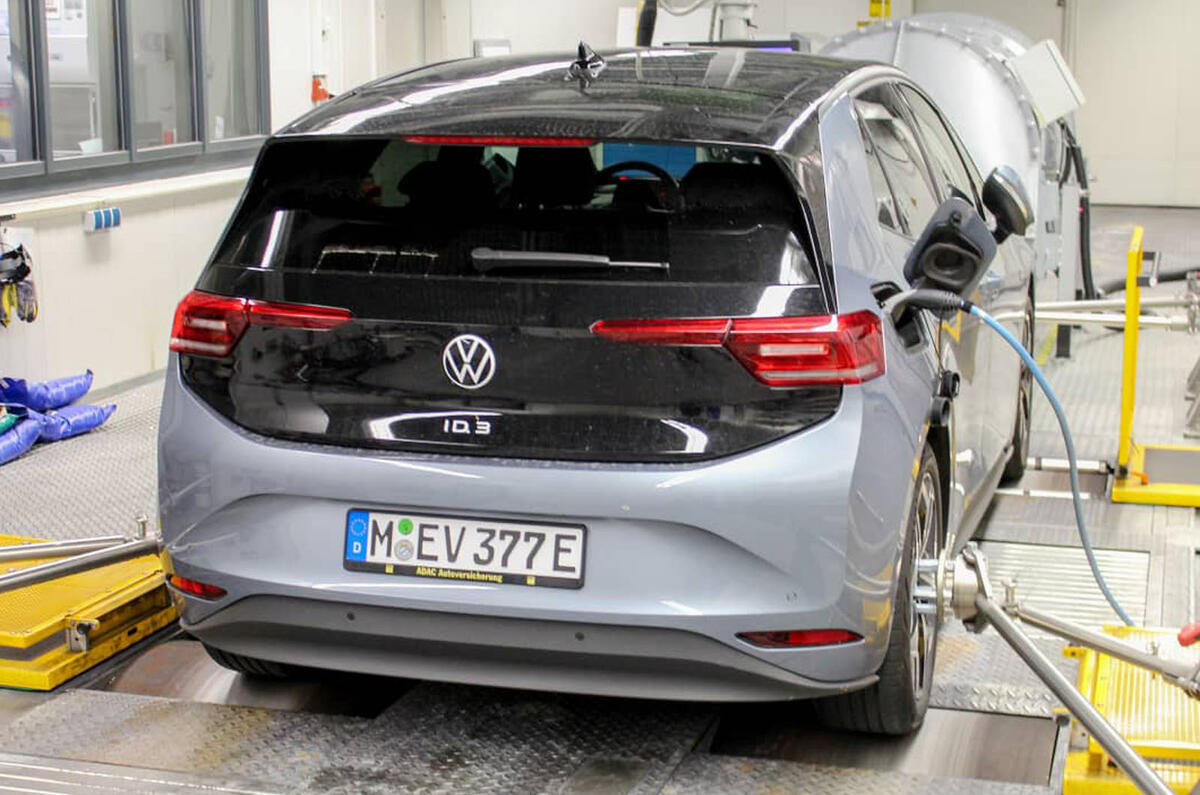A 107,000-mile Volkswagen ID 3 tested by the ADAC, Germany’s equivalent to the AA, has lost only eight miles of usable battery range while covering that distance.
It found that the 77kWh battery had lost 9% of its capacity during four years of hard use, having been regularly charged up to 100% and then left at that level for several days as it was rotated between ADAC engineers.
But software updates over the car’s life gradually improved its energy efficiency, which offset the losses from the battery.
ADAC lab testing in 2021 found it managed 3.11 miles per kWh, whereas it now does 3.40mpkWh. In the real world, over the full 107,000 miles, it recorded an average of 2.70mpkWh.
The updates mean the ID 3 now charges more quickly than before, too: it originally drew a maximum of 125kW, according to the ADAC, but can now reach 160kW. That translates to a saving of around two minutes when charging from 10-80%, it said.
The firm also tested the battery’s state of health throughout its life, starting at 96% at 13,500 miles. It sustained this until 43,200 miles, when it fell to 95%, and it dropped another percentage point at 52,400 miles. It reduced again to 93% at 64,000 miles; 92% at 80,000 miles; and then to the final 91% at 90,600 miles.
The result put the firm’s ID 3 well clear of its battery warranty, which guaranteed at least 70% of the original capacity at 100,000 miles or 10 years.
The ADAC said it will continue using the ID 3 and will test its battery health again at 250,000km (155,000 miles).








Join the debate
Add your comment
I run several vehicles over 30 years old, oldest im still running is 1975! Diesel engines will run at 90%+ after 50 years.
This electric madness must stop.
Headline is misleading. The fact is that a 4 year old battery has lost 9% of its original capacity, which doesn't sound so good. On the other hand this loss after 1000,000 miles sounds about right. I don't think software updates can be relied upon to keep pace with failing batteries. It would be interesting to learn what these updates actually do, but it's interesting to see that the car's energy efficiency over the total mileage is not actually that great.
The story itself couldn't be more accurate and uses real world data. It's even more impressive considering that the battery in this case is getting used far harder, 25k per year, than the average BEV battery.
The car has over 300 miles of range so how is 9% only 8 miles?
That's very impressive...
Perhaps Kia could borrow some exgineering expertise as they've now had my sister's e-Niro for 9 months due to a failed battery (after approx. 3 years and 20k miles) which they can't seem to fix under warranty!
If it ever does get fixed, and makes it to 100k miles, I'll ask her to post battery deg details...